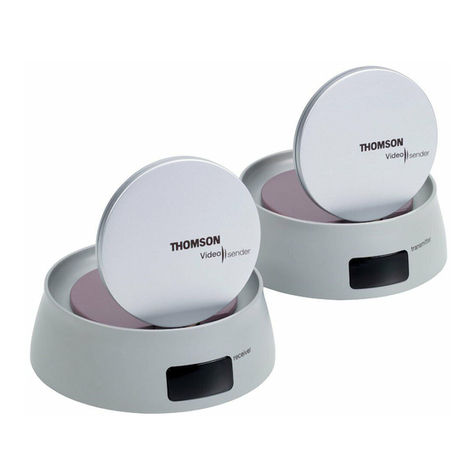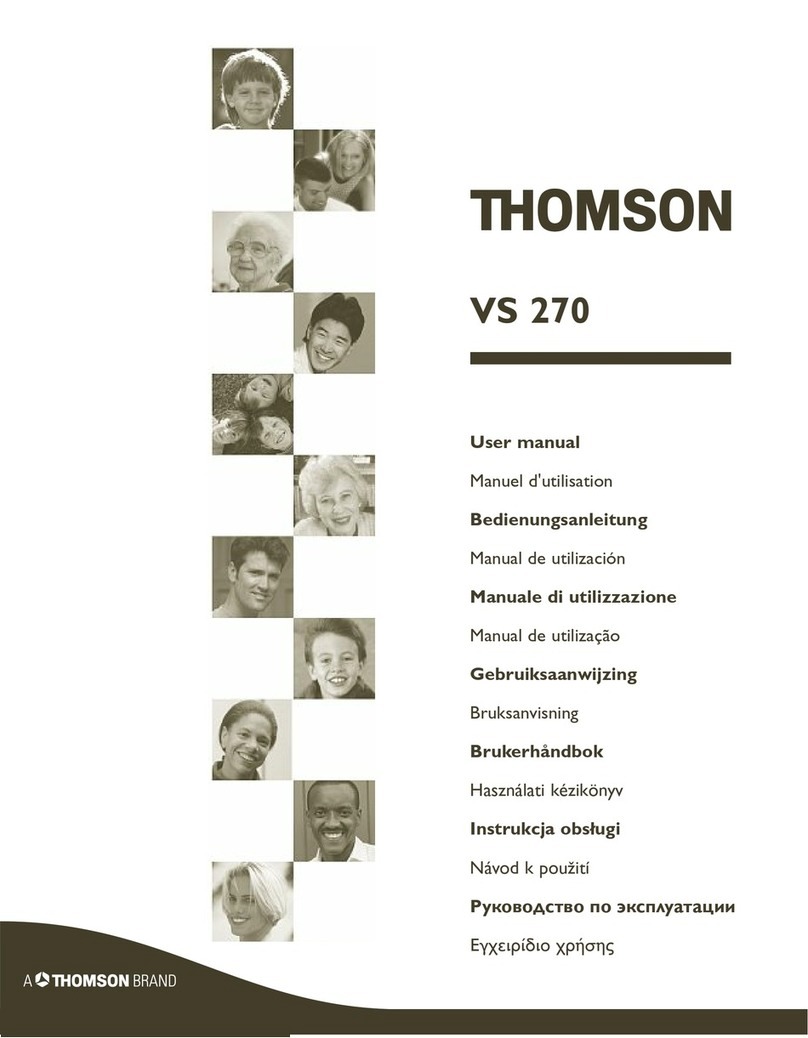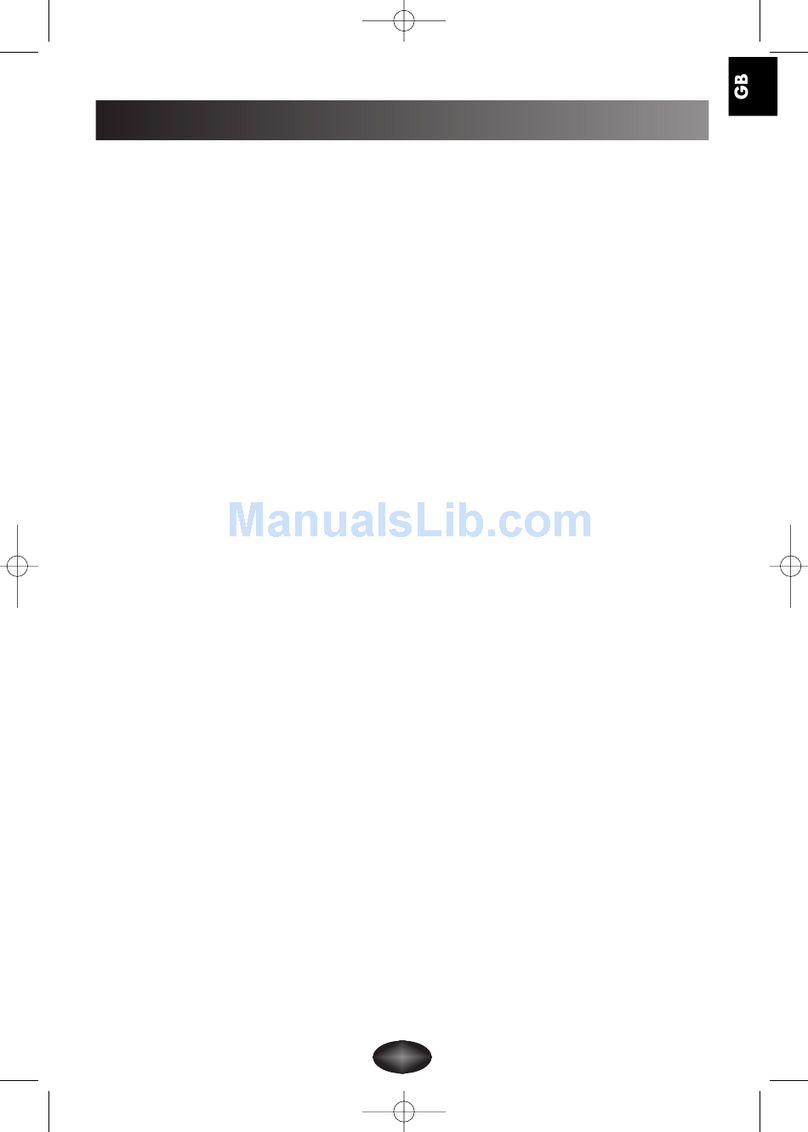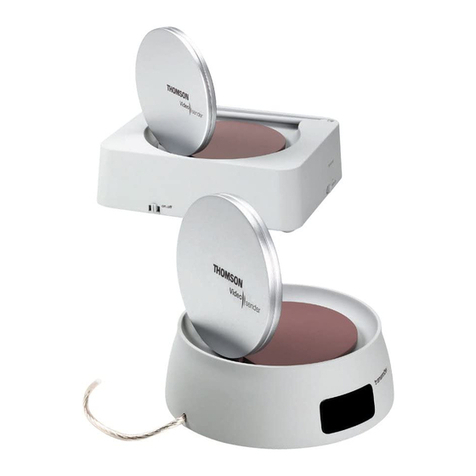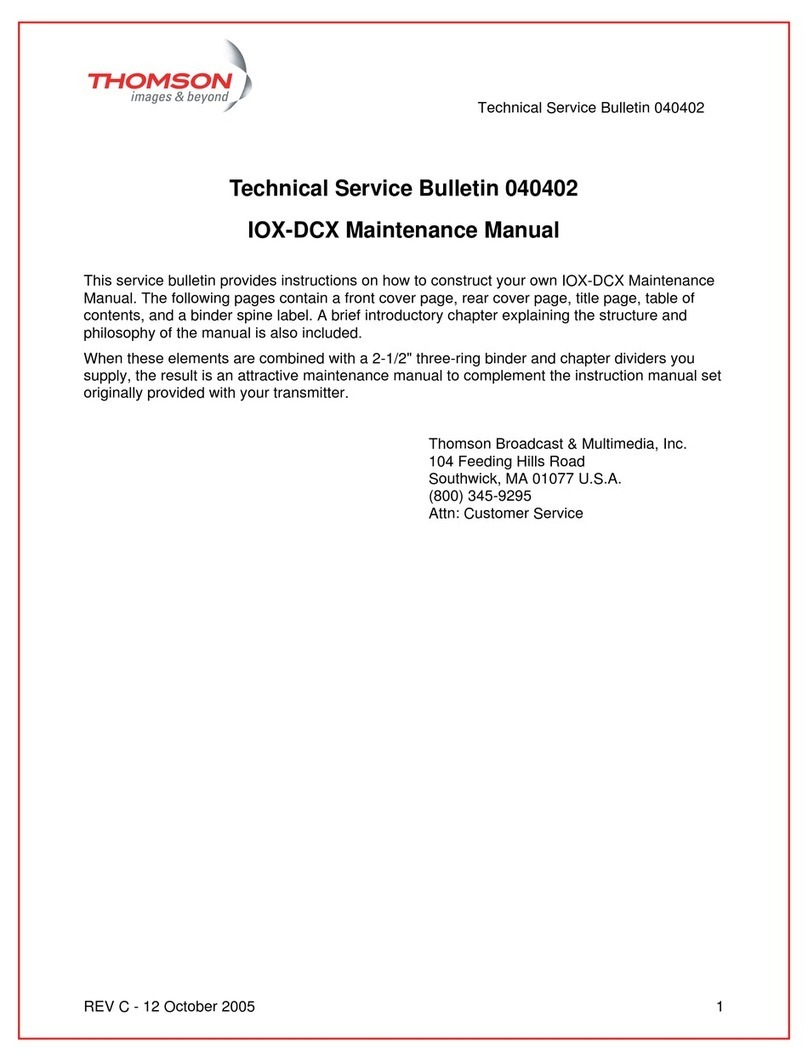4
The connection setup depends on the devices you have. Here is an example of how
to connect the transmitter in a setup comprising a television set and another device
(DVD player).
Follow the instructions below and the diagram opposite.
Also refer to the operating diagram printed on the inside cover of this manual.
1. Place the transmitter (1) near the device (video recorder, DVD player, etc.) from
which you wish to transmit pictures and sound and connect it using the mini DIN
cord and extension box (2 A and 2 B). Connect the SCART cable (2 C) to socket I
of the entension box and to socket AV1 of TV.
With a SCART cable (not supplied), connect the TV set to the extension box
(socket 2) already connected to the video recorder or DVD player.
The red light on the extension box indicates that the transmitter is turned on.
2. Carefully extend the antenna of the transmitter (1) and orient it towards the room
where your second TV set (TV2) is located. Turn on (position ON) the transmitter
and receiver, using the ON/OFF switch located on its lower side. Place the
channel selectors of the transmitter and the receiver on the same channel (same
letter).
3. Fit the mains supply lead (3) to the transmitter and plug it into a 220/240 V ~ 50 Hz
mains power supply.
4. Fit the lead (4) following these stages:
- connect the jack plug to the IR EXTEND socket,
- unwind the lead and place one cell near the infrared window of the unit to be
operated (video recorder or other),
- after installing the receiver (see Pages 6 and 7), ask someone to use the remote
control of that equipment item to be controlled from the room where the second
(TV2) is located,
- by moving the cell around in front of the unit to be operated you will find the
location that permits its control from the other room. You must fix the cell in that
position. Usually, this will be a more or less large, transparent area located on the
front of the unit.
5. Remove the protective self-adhesive film from the infrared cell of cord (4) and affix
it to the infrared-sensitive panel of the equipment to be remote controlled. The
cordon has 3 cells in order to let you play video and audio from 3 equipment items
connected to the (TV1) set (see Diagram on Page 10).
Installation of transmitter







